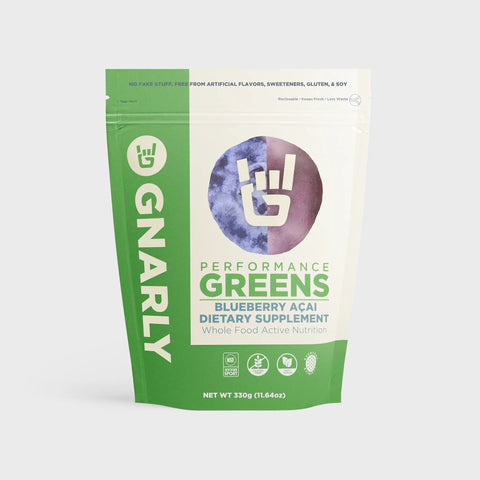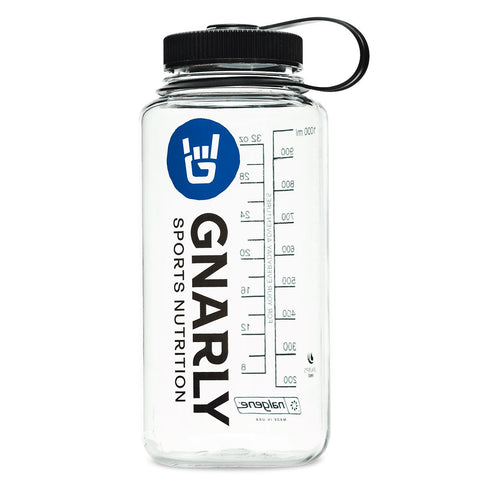The health and fitness world is full of fads. From flashy diets to shoes lighter than a feather, we’re often inundated with how to make ourselves perform better with external enhancements. And oftentimes athletes are stuck battling their own bodies, assuming that to win the marathon, body-fat percentage has to be low, or that bulking is only for those who want to look like the Incredible Hulk. But simply being lightweight doesn’t always equate to being fast in the same way that cutting weight isn’t necessarily unhealthy.
It would be simple if there was a perfect equation, an ideal strength-to-weight ratio that enabled every athlete to perform their absolute best. It would also be ideal if we all required the same amount of calories, macronutrients and vitamins to send. But of course the truth is that vast differences exist in what our bodies are needing to perform. These needs are also heavily dependent on our prefered sport. For example, an endurance ultra runner has different requirements than a sumo wrestler. The runner would like to be lightweight, making each step take less energy to rebound back off the ground. The sumo wrestler is looking for size and brute strength. An ultrarunner with a sumo-wrestler body would have an awful race. Similarly, a sumo wrestler would never win matches at the weight of an ultrarunner.
The mindset that comes with cutting weight to send versus fueling for performance is one that every competition athlete deals with. Being lighter may lead to better performance, but at what cost to body and mind? To gain some insight on this conundrum, we checked in with several Gnarly athletes, strength coaches and nutritionists.
Lightweight for sending or fueling for performance?
Gnarly athlete Corinna Coffin competes on the Spartan Pro Team and crushes it at the CrossFit Games. Corrina is also a registered dietician and she’s worked with athletes from all backgrounds and sports where she takes a slew of components into consideration before recommending an athlete cut calories.
“A common mistake made by many athletes is the belief that a lower body weight will undoubtedly lead to performance improvements,” Corinna said. “This concept that lighter will automatically translate to ‘faster’ can result in the complete opposite outcome in the absence of careful consideration and execution.”
The consideration and execution Corinna mentions is referring to the type of sport, the goals of the athlete, their competition objectives and honestly a whole bundle of the other components.
Gnarly athlete and sports nutritionist Jesse Rich completely agrees that in most cases, a caloric deficit will do more harm than good to the serious athlete. “If you are a beginning athlete whose goal is to lose weight then yes, a slight caloric deficit wouldn’t hurt to burn fat and get lean to become more efficient,” Jesse said. “But performing at high levels requires a lot of calories to restore glycogen and keep your endocrine system (hormones) functioning correctly.”

Gnarly climber Maiza Lima agrees with both Corinna and Jesse, having experimented with lowering caloric intake while still trying to maintain optimal performance levels on her endeavors of climbing, hiking, running and weight lifting.
The night before our interview, Maiza ate most of a Panettone, an Italian sweetbread filled with candied fruit. Did she regret it? Absolutely not.
“I do 10,000 steps every single day while walking my dog, so that’s five miles,” Maiza says of her typical daily routine. “Most days I train at the climbing gym or I lift weights. That’s a lot of activity and my body and muscles need to fuel.”

When Maiza first began climbing she felt overweight and lost 10 pounds over the course of six months. She felt good and started to send harder, more technical routes. Over the last few years, she’s gained back some of that weight she initially lost. In an attempt to ditch the extra weight, she tried a variety of diets from low-fat to intermittent fasting.
“I think that’s how I got so many injuries and chronic fatigue,” Maiza said. “I was not giving my body what it needed and I could not perform during this spring. I hit a wall and I couldn’t climb anywhere close to my limit.”
Maiza is currently feeling strong and healthy on a higher-fat diet. “My body is so happy with this diet,” she said. “I’ve been feeling so much stronger weight lifting and climbing. I’m like, ‘oh my god, why didn’t I do this before?’” She also eats dessert if she so desires. “If I have a day that I just can’t resist the damn cake, that’s totally fine.”
However, Maiza has encountered some naysayers to her athletic lifestyle, commenting on her defined muscles and physique. “I still get called out by people who say that I am trying to be a bodybuilder,” she said. “I’ve had people say, ‘You have to stop climbing because you’re starting to look like a guy.’”
She’s far from bothered by these statements, though. Maiza fuels her body for optimal performance, gaining muscle easily from her active lifestyle and intense pursuit of rock climbing and strength training. She also feels positive about showing other women that muscle is a gift. Modeling for well-known outdoor gear companies, Maiza enjoys being a figure in advertisements.
“I have this muscle I gained from training and I’m not gonna take that back,” she said. “I feel strong and it makes me climb better.”
Different fuel for different sports
It’s critical to replenish calories during a race when it comes to fueling for performance in endurance sports. Take Trevor Fuchs, for example. On his recent Fastest Known Time (FKT) record on the White Rim Trail in Moab, he ate some leftover pumpkin pie mid-route. On training days, he’s no stranger to “second dinner,” the meal after dinner but before the pre-bed snack. The calories Trevor burns in a day from working and training require replenishment to keep his body repairing and his energy levels replenished.
Adventure athlete Kelly Halpin packs massive chocolate chip cookies with her on her FKT attempts. Potato chips make it into her bag, too. Post race, Kelly is no stranger to eating an entire pizza, which is anything but a gluttonous decision. It’s restoring vital calories her body needs to recover.
Experienced endurance athletes aim to consume 100 calories per hour of activity (which is on the low end), while the majority may find they perform best ingesting 300+ calories per hour of activity. Without this consistent fuel the body crashes, making sending nearly impossible.
“Whenever peak performance is the primary goal, all efforts to lose weight or restrict calories should be off the table,” said Corrina Coffin. “Any time we restrict calories, we deprive our bodies of the resources needed to perform to the best of our abilities.”
You Do You
Gnarly athlete and strength coach Joslynn Corredor agrees that fueling for peak performance is delicate work and highly individualized, not to mention dependent on the sport. This year, two of Jos’ strength-training clients will compete at the Olympics, climbing for Team USA.
The decision to implement a cutting phase before a big competition is something many athletes consider. Depending on the sport, cutting some weight could be beneficial to performance. But everyone agrees, cutting is a temporary phase and isn’t sustainable or healthy for longer periods of time.
“If an athlete isn’t competing soon, cutting shouldn’t be a thing,” Jos said. “Maintaining healthy eating habits and making sure you’re replenishing your body while training is the best approach.”

Not only does Jos point out that cutting before a competition is dependent on the athlete, it’s dependent on the sport and even further whittled down to the position in that sport. Football, for example, includes some positions where bulking is critical to success while other positions would suffer from a pre-game bulking phase.
Jesse Rich agrees that fueling is heavily dependent on sport, noting that a bodybuilder doesn’t need to worry much about body-fat percentage impacting performance, a measure he often uses as a nutritionist. “If you’re an endurance athlete, a lower body fat percentage could improve your performance” he said. “However, too high or too low can hurt your body and performance. For men, I keep an eye on male clients who are under 10 percent body fat and under 20 percent body fat for female clients.”
Until we begin colonizing another planet, we’re all under the impact of Earth’s gravitational pull. It requires strength and energy to fend off this pull, but being lightweight for sending doesn’t always play nice with optimal performance. It’s a delicate balance that each individual faces depending on their goals, chosen sport and caloric needs. No single “good” diet fits every athlete. A well-rounded lifestyle of staying active, eating whole foods and allowing for some Panettone, like Maiza does, is likely the best combination for optimal performance.





